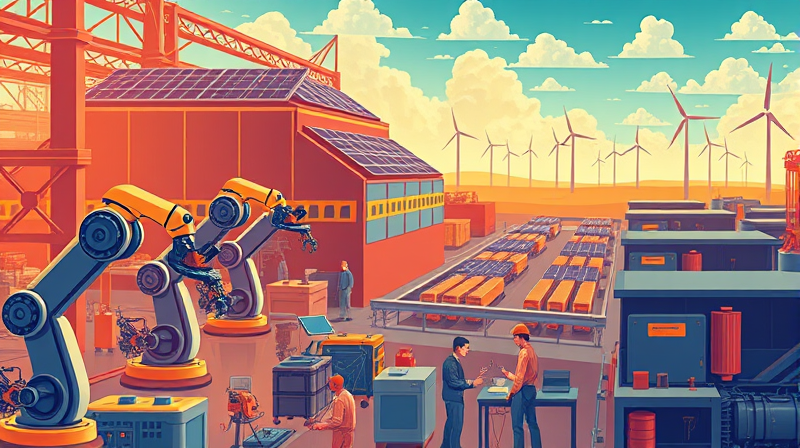
In 2025, a remarkable shift is underway as companies realign their global footprints, bringing production back home. The rising reshoring movement is reshaping the landscape of U.S. manufacturing, driven by policy changes, strategic considerations, and technological advances. This article explores the multifaceted catalysts, quantifies progress, and offers practical guidance for businesses eager to harness this transformative moment.
Government action has been a pivotal force behind the reshoring surge. In early 2025, the U.S. imposed significant policy incentives including tariffs on goods from over 60 countries, with rates up to 49% on Cambodia and 46% on Vietnam. A 25% auto tariff further discouraged offshore auto assembly. These measures, combined with the 2022 CHIPS and Science Act and the Inflation Reduction Act (IRA), have funneled billions into domestic semiconductor and green technology facilities.
Beyond direct funding, tax credits and regulatory support for clean tech have enhanced the appeal of local production. Companies now view these strategic federal incentives as the backbone of a competitive, secure supply base. For executives, understanding and leveraging these policies is the first step in turning reshoring ambitions into reality.
While enthusiasm runs high, actual output gains have been modest. According to the Institute for Supply Management (ISM), 29% of U.S. firms are actively reshoring, and 35% are reducing reliance on China. Meanwhile, a Kearney survey found 96% of CEOs evaluating or implementing reshoring plans, marking a 15% year-over-year increase in declared intentions.
Yet U.S. manufacturing output rose only 1% in 2025, and imports from 14 Asian countries jumped 10%, raising the import ratio by 9%. This discrepancy reflects the time-intensive nature of building new capacity, securing skilled labor, and optimizing processes. For businesses, setting realistic timelines and milestones is essential to maintaining momentum and stakeholder confidence.
Certain industries are at the forefront of the reshoring wave:
High-labor sectors such as apparel and consumer goods remain more hesitant, requiring alternative strategies like nearshoring to Mexico or dual-sourcing models that blend regional agility with cost efficiency.
Reshoring is only viable if domestic operations can match or exceed offshore costs and capabilities. Here, cutting-edge automation technologies are a game-changer. Advanced robotics, additive manufacturing, and AI-driven quality controls reduce labor intensity and enhance precision.
Digital supply chain management platforms provide end-to-end visibility, enabling rapid response to disruptions and data-driven optimization. Companies adopting integrated digital transformation have reported up to 30% productivity gains, a critical boost in offsetting higher U.S. labor costs.
Recent crises—from the COVID-19 pandemic to geopolitical tensions—have exposed vulnerabilities in long, complex supply chains. By reshoring, firms can achieve robust supply chain resilience: shorter lead times, greater traceability, and reduced inventory buffers.
Security considerations extend beyond physical disruptions. Cyber threats, intellectual property risks, and regulatory compliance all favor domestic operations under U.S. jurisdiction. Procurement teams now prioritize suppliers within fewer miles of their facilities to minimize exposure and accelerate recovery.
Despite abundant enthusiasm, reshoring faces hurdles. Skill shortages, infrastructure gaps, and site-specific security risks can slow progress. A recent study showed that two potential plant sites just two miles apart could differ by 75 points in threat exposure due to local crime, cyber risk, or natural hazard profiles.
To navigate these challenges, companies should:
GE’s Louisville facility exemplifies successful reshoring, creating over 1,000 jobs and reducing lead times for jet engine components by 40%. Similarly, a leading solar panel manufacturer reopened a shuttered U.S. plant, leveraging IRA credits to achieve cost parity with imported modules.
These examples underscore the importance of aligning incentives, technology investments, and community engagement. Companies that engage early with local stakeholders often secure permits faster and build stronger brand loyalty among employees and consumers alike.
To capitalize on the reshoring movement, organizations can follow a clear roadmap:
The reshoring trend represents more than a shift in production location—it signals a domestic manufacturing renaissance. While actual output gains will trail the fervor of announcements, the long-term benefits of job creation, supply chain security, and technological leadership are profound.
Companies that embrace this structural shift, aligning policy opportunities with technology investments and risk management, will emerge stronger, more resilient, and better positioned to meet evolving consumer and strategic demands. The opportunity is now: by acting decisively, businesses can anchor a competitive and sustainable manufacturing future on home soil.
References













